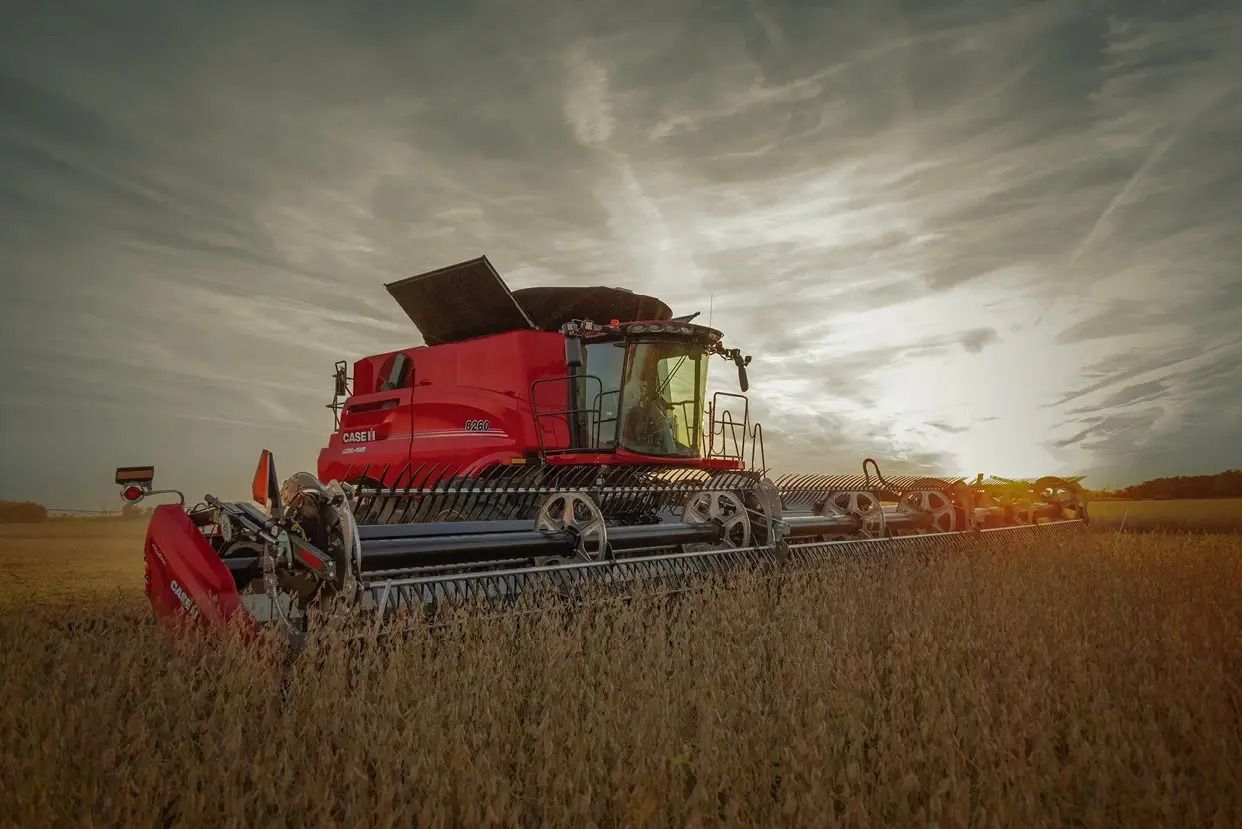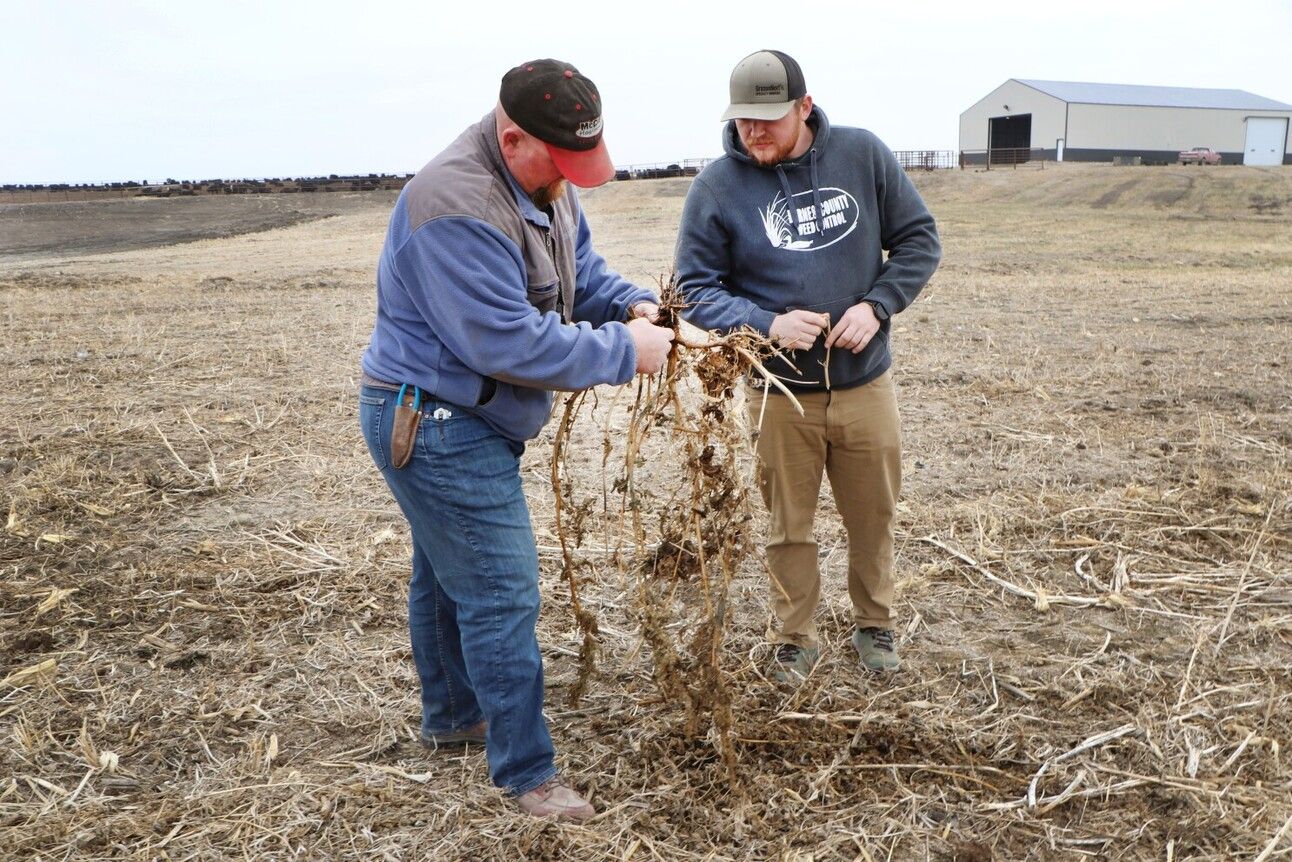- The Daily Yield
- Posts
- 🍊 Trumpmania
🍊 Trumpmania
March 4th tariff talk, field notes on Palmer Amaranth, and is keeping up with the Jones' worth it?

🌞 Morning. It’s March 5th, 1 day post Trump tariffs—farmers are sweating, Canada’s fuming, and Mexico’s probably drafting a “Dear John” letter to U.S. trade. Thanks for tuning into another read!
— TDY team
Today's read:
📊 Market pulse:
What impact will March 4th tariffs have on farms & businesses?
The commodity markets have been on quite the ride, especially with new tariffs shaking things up across North America. Let's dive into the details and see how these changes might impact your operation. First a quick market review:
Oil prices have been on a rollercoaster. After OPEC+ announced plans to boost production starting in April, Brent crude prices dipped to their lowest since September, settling just below $72 a barrel. This move caught many off guard, especially since previous attempts to throttle supply didn't quite push prices up as intended.
Corn and soybean markets are buzzing with activity. The introduction of "micro" contracts by CME Group has opened the doors for retail traders to dip their toes into these markets. These contracts, being one-tenth the size of standard futures, make it easier for individual investors to participate without the hefty commitments. This democratization could lead to increased liquidity and, potentially, more volatility.
Europe's natural gas market is walking a tightrope. A harsh winter, coupled with reduced wind power and an industrial rebound, has significantly depleted gas inventories. With storage levels at 39% capacity and no Russian gas pipeline imports, Europe is leaning heavily on liquefied natural gas (LNG). This dependency means Europe is now more susceptible to global market fluctuations, setting the stage for a potentially volatile summer.
Ok now! Let's talk tariffs for a minute…
Yesterday the Trump Administration enforced 25% tariffs on goods from Mexico and Canada, and 20% on imports from China. This move faced strong objections from Canada and Mexico's leaders, with Canada imposing reciprocal tariffs and Mexico planning retaliatory measures. Canadian Prime Minister Justin Trudeau criticized the tariffs, highlighting previous cooperation on border security, while Mexican President Claudia Sheinbaum condemned the U.S. for ignoring its role in the opioid crisis.
So what is the impact on North American commodities?
These tariffs are expected to send ripples across various sectors, particularly food, alcohol, and the automotive industry. The U.S. relies heavily on agricultural imports from Mexico, including avocados and beverages, which will likely become more expensive for consumers. The automotive sector, with its cross-border manufacturing dependencies, could see reduced earnings and operational shifts, as noted by S&P Global Mobility. Honda has already announced the relocation of Civic production from Mexico to Indiana to circumvent the tariffs. These changes are anticipated to have significant economic repercussions across North America.
What this means for you:
Farmers: Brace yourselves. Higher costs for imported fertilizers from Canada could squeeze margins. Plus, retaliatory tariffs mean tougher times accessing key export markets for crops and meats. Nothing but pain for rural America. It's a double whammy of rising costs and shrinking markets.
Investors: The commodity markets are entering choppy waters. Trade tensions and policy shifts are stirring the pot, leading to potential price volatility. Diversification and staying nimble will be key strategies moving forward.
Ag pros: Supply chain disruptions could become the new norm. From increased costs of imported goods to shifting trade relationships.
🚜 Ag-tech:
More machine, more problems? Unpacking the machinery debate

Farm machinery keeps getting bigger, badder, and more powerful, with beasts like the 830-horsepower John Deere 9RX and the Class 10+ Case IH Axial-Flow 9250 combine leading the charge. The appeal? Speed and efficiency—covering more acres in less time, which is key when battling unpredictable weather and shrinking labor pools. As John Deere’s Michael Porter puts it: “How can I cover the most amount of ground in the shortest amount of time?”
But before going all-in on these mechanical giants, consider your infrastructure.
Rural roadways
Power lines
Field entrances
“Those are going to be really limiting factors.”
If your equipment can’t squeeze through a narrow road or under a power line, all that horsepower won’t help much.
Then there’s the hidden cost of going big. A larger combine might mean you need a bigger grain cart, more semi-trucks, or even expanded storage and drying capacity. Case IH’s Nick Bose reminds farmers to think about the whole system, not just the machine: “They’ll add another semi-truck, but do they need a wet bin increase? A larger in-line dryer?” Bigger equipment means bigger expenses, so plan accordingly.
Lastly, don’t ignore soil compaction. Heavier machines put more pressure on the land, which can reduce yield potential in the long run. While farmers know the risks, many still opt for bigger iron to maximize efficiency during short planting and harvesting windows. Iowa State’s Mehari Tekeste cautions that while size has advantages, long-term soil health must be part of the equation.
Key takeaways:
Big machines = more efficiency, but only if your operation can handle them.
Infrastructure matters—check your roads, power lines, and storage capacity before upgrading.
Think beyond the tractor—you might need new trucks, grain carts, and bin upgrades, too.
Soil compaction is real—heavier equipment can impact yields if not managed properly.
Bigger isn’t always better—it’s about what works best for your farm.
📝 Field notes:
Palmer Amaranth creeps north

📸: Mikkel Pates
Farmers and agronomists, meet Palmer amaranth—the weedy menace creeping its way into Canadian fields like an uninvited guest at a BBQ. First spotted in Manitoba and Ontario, this herbicide-resistant pigweed on steroids is bad news. It grows up to 8 cm per day, chokes out crops, and can slash corn and soybean yields by 70%. Oh, and did we mention it’s resistant to NINE different herbicide groups? Yep, this one doesn’t play fair.
So, what’s the game plan? Here’s what farmers and agronomists need to know:
How to Spot Palmer Amaranth
No hairs on the stem (unlike redroot and green pigweed)
Super long petioles (the little stalks attaching leaves to the stem)
Thicker stalks than other pigweed varieties
Crazy seed clusters (can be up to 90 cm long!)
Dioecious reproduction (separate male and female plants = faster spread)
How it’s spreading:
Contaminated farm equipment
Livestock feed & manure
Migratory birds (yes, ducks are working against us)
Wind-dispersed seeds (it produces up to 250,000 per plant!)
How to STOP it before it takes over:
Kill It Before It Seeds – One plant can spawn hundreds of thousands more, so mow, till, or torch it before it sets seed.
Cover Crops Are Your Friends – Cereal rye and perennial forages like alfalfa can suppress germination and weaken seed banks.
Rotate Those Crops – Winter cereals and fall-seeded crops give Palmer amaranth fewer chances to establish itself.
Hand Weed & Scout Aggressively – Spotting and removing it early prevents long-term headaches.
Know Your Herbicide Game – While resistance is a major issue, some chemical controls can still work—just consult with an agronomist before spraying.
Clean That Equipment! – If Palmer amaranth makes it into your fields, don’t help it spread further with dirty machinery.
Agronomists:
Educate growers on proper identification and management.
Develop integrated weed control plans that go beyond herbicides.
Promote seed and equipment sanitation to prevent field-to-field spread.
Encourage cover cropping as a sustainable suppression strategy.
Got Palmer amaranth on your radar? Let us know how you're tackling it!
🏛️ Policy:
Lights, camera, carbon credits!

Shutterstock images
Australia's carbon credit system is stepping into the global spotlight, with environmental filmmakers Joshua and Rebecca Tickell dubbing it a potential "global model." The duo, known for their eco-documentaries like "Kiss the Ground," are in Australia filming "Groundswell," focusing on regenerative farming at Wilmot Cattle Co in New South Wales
So, what's the deal with Australia's carbon credit scheme?
At its core, the scheme encourages businesses to purchase Australian Carbon Credit Units (ACCUs) to offset their emissions. The Safeguard Mechanism ensures that large greenhouse gas emitters keep their net emissions below agreed limits, promoting a regulated carbon market.
Why is this a big deal?
Environmental Impact: By incentivizing carbon sequestration, the scheme aims to reduce atmospheric CO₂ levels, contributing to global climate goals.
Economic Opportunities: Farmers can monetize sustainable practices. For instance, Queensland's Andrew Lawrie earned approximately $3 million through soil carbon projects.
Global Influence: The Tickells believe Australia's approach could set a precedent for other nations, potentially leading to a unified international carbon credit market.
The nitty-gritty:
Farmers adopt practices that increase soil organic carbon, such as:
Reduced tillage: Minimizing soil disturbance to retain carbon.
Cover cropping: Planting specific crops to enhance soil health.
Rotational grazing: Managing livestock movement to promote pasture growth.
These methods not only sequester carbon but also improve soil fertility and resilience.
The fun part: The why should we care?
Imagine turning dirt into dollars—farmers get paid to adopt eco-friendly practices, leading to healthier soils and a healthier planet. It's like getting rewarded for eating your veggies!
The flip side: Any dirt on the scheme?
Critics argue that measuring soil carbon is complex and can be influenced by factors like weather, potentially leading to inaccurate credit allocations. Additionally, some small-scale farmers find the accreditation process costly and cumbersome, limiting widespread participation.
Ag-bite bulletin 📌
Scottish farming faces uncertainty amid policy changes: Scottish agriculture is in limbo due to potential tariff changes and unclear policies from the UK and Scottish governments. Farmers are caught between the need for food security and environmental conservation. [read more]
MSU loses millions as USAID funds slashed: Michigan State University is feeling the pinch after significant cuts to USAID funding. The loss of millions in agriculture and higher education grants underscores the ripple effect of budget decisions on academic research and global development. [read more]
U.S. Agriculture Outlook: Challenges and Opportunities Ahead
The Federal Reserve Bank of Kansas City reports that U.S. agriculture is navigating choppy waters with lower crop prices and rising costs. Yet, the resilient livestock sector offers a silver lining, reminding us that every cloud has a meaty center. [read more]
Brain games ☕️
Play Sudoku: https://sudoku.com/
Guess the Animal
I have no bones,
I can fit through spaces as small as my beak,
And I have three hearts pumping blue blood. What am I? 🤔
“When you change your thoughts, remember to also change your world.”
Answer: Octopus 🐙

Reply